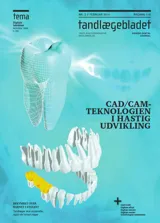The handling of digital images
Digital imaging has revolutionized radiology during the past 20 years. All digital imaging is still based on analogue signals from imaging detectors which are converted into digital binary format which can be processed by computers. Digital images are formed of individual pixels, each containing contrast value (grey scale). Picture archiving and communication systems (PACS) provide tools for storing and transporting the digital images. The DICOM provide the universal format for the medical image data. Also other formats, e.g. bitmap (bmp) and Joint Photographic Expert Group (jpeg) are used for dental images. Digital imaging can be described in three steps: 1) image acquisition uses physical processes to get the analogue signal which is converted into digital raw data, 2) post-processing enables modification of the raw data to emphasize the diagnostic target features, 3) image review brings the processed images to the medical display. Quality assurance must cover the whole imaging chain. Due to the complex bony anatomy of the maxillofacial region, the 3D cone-beam computed tomography has become more popular in dental use. In the future, multimodal and 3D/4D imaging methods produce increasing data loads in radiology. Information concerning efficacy and effectiveness will be the fundamental motivator of the future radiological applications and IT solutions.


